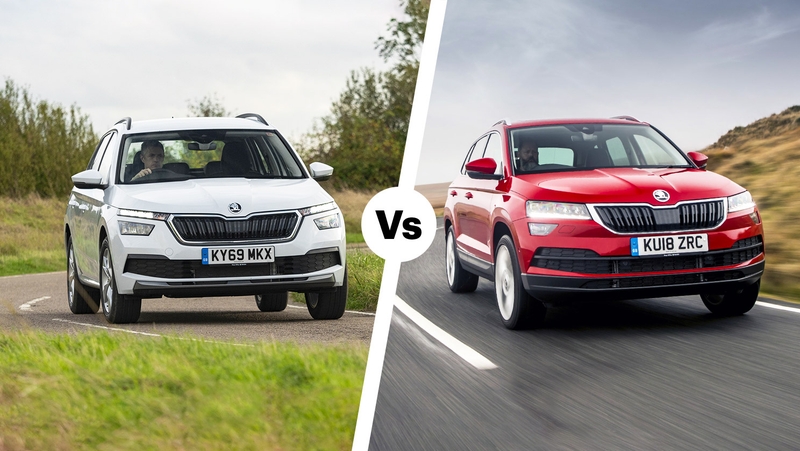
Skoda Karoq engines, driving and performance
Gallery
How does the Skoda Karoq drive?
There’s almost nothing to dislike about the way the Karoq drives. Even the manual gearbox versions shift slickly and with minimal clutch effort – in fact, the most exertion you’ll face is using an old-school ignition key on entry-level SE Drive models. SE L and Sportline use keyless entry and starting, so you can hop in without so much as putting your hand in your pocket.
On the move it’s a quiet cruiser, with a good all-round view out. It grips well in corners and can happily tackle a B-road at 60mph or faster should the mood take you. It won’t entertain you, but you can be confident you’ll get to your destination relaxed and in one piece, whatever the weather.
Is the Skoda Karoq comfortable?
The Skoda Karoq’s a very comfortable car, whether you’re driving on potholed roads around town or for long distances on motorways.
We like how the car irons out bumps at all speeds, and it’s only when you get a Sportline model on bigger 19-inch alloys that you start to feel a little bit jiggled about in your seat. Speaking of Sportline models, the sports seats in this version do hold you in place nicely in corners, but they have thicker side bolsters to do so – which can feel a little uncomfortable if you’re of particularly broad build.
What’s the best Skoda Karoq engine to get?
If you’re mostly going to drive your Karoq around town, then the 1.0-litre 110hp petrol is not to be sniffed at. It has plenty of low-down poke and can hustle the Karoq along more than quickly enough, although it can sound a bit strained if you want to overtake someone already doing 70mph on the motorway. For more relaxed cruising, pick either the 2.0-litre diesel with 116hp or the 1.5-litre petrol with 150hp. Both blend economy and performance rather well – expect over 55mpg from the diesel and 45mpg from the petrol.
After a 4x4 Karoq? You have two options – a 2.0-litre petrol with 190hp or a 2.0-litre diesel with 150hp. This isn’t as efficient as the front-wheel-drive 116hp diesel version, but we still averaged 48mpg in one after several hundred miles of long-distance driving.
Skoda offers most of the Karoq’s engines with a dual-clutch DSG automatic gearbox, and its rapid-but-smooth gearshifts nearly always keep you in the right gear. The manual gearbox alternative is slick-shifting and has a light clutch, so it’s no hardship if you’d rather save a bit of money.
Skoda Karoq performance
The Karoq is no hot hatch – nor is there a fast vRS version, unlike the Kodiaq – but performance is pretty decent across the board.
The entry-level 1.0-litre petrol engine with 110hp takes a reasonable 11.3 seconds to get to 62mph from a standstill. The 1.5-litre petrol with 150hp cuts that time significantly to 8.9 seconds.
Step up to the 2.0-litre petrol-engined Karoq with 190hp and a 4x4 system and you’ll dash from 0-62mph in just 7.0 seconds, making it the fastest-accelerating version.
Over on team diesel, the 2.0-litre TDI Karoq with 116hp takes 10.6 seconds to get to 62mph, while the 150hp 4x4 diesel takes just 8.7 seconds for the sprint.


















































